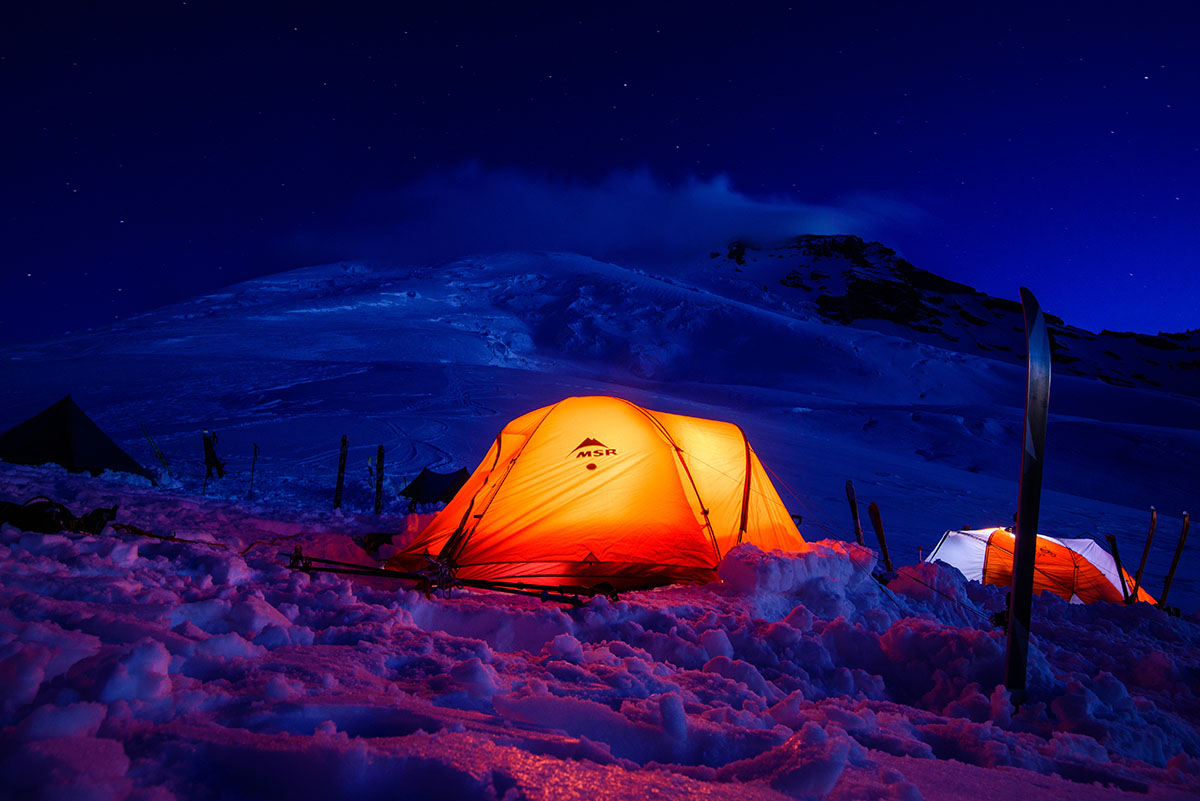
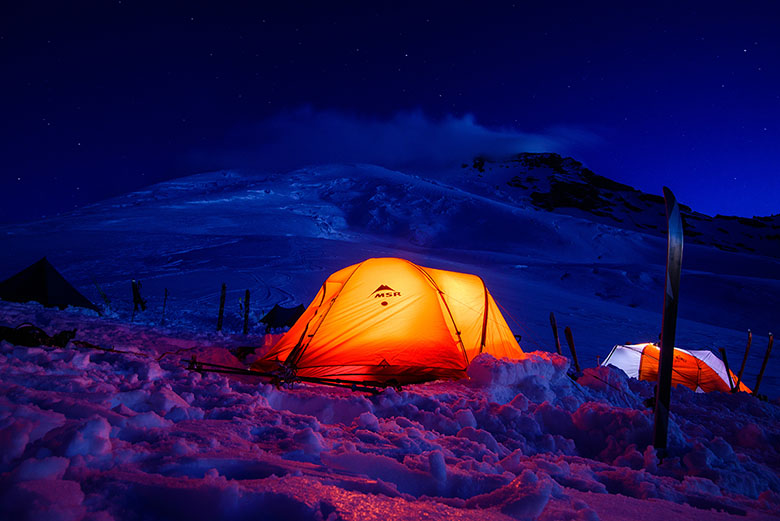
Price: $860
Category: Basecamp/mountaineering
Trail weight: 6 lbs. 8 oz.
Floor area: 33 sq. ft.
Wall(s): Double
What we like: Vertical walls increase livable space, and the front vestibule is generously sized.
What we don’t: No snow flaps, limited ventilation, and fairly expensive.
See the MSR Remote 2
The ideal 4-season tent is a delicate balance of roominess and comfort, ventilation, and extremely durable stormproof construction, all in a package that doesn’t weigh you down too much. With a short weekend on Mount Rainier and a longer basecamp-style expedition to the Columbia Icefield on the docket, I was hoping to find a 4-season tent suitable for anything from lightweight mountaineering to a multi-day home away from home on a glacier. A tall order indeed, but for the most part, MSR’s Remote 2 delivered. Below we break down the Remote 2’s weather protection, ventilation, interior space and storage, durability, and more. To see how it stacks up, see our article on the best 4-season tents.
Spring in the Canadian Rockies means finicky weather, and camping on the Columbia Icefield was a perfect opportunity to test the MSR Remote 2 in a variety of conditions. Initially, I was a bit nervous taking a new tent on such an expedition, but I quickly gained confidence in the quality of the Remote. We weathered clear and cold conditions with moderate winds, some light snow, and hot sunshine and warm rain. At the end of each day, it was comforting to ski back to our reliable shelter, spotting the bright orange tent standing strong from a mile away.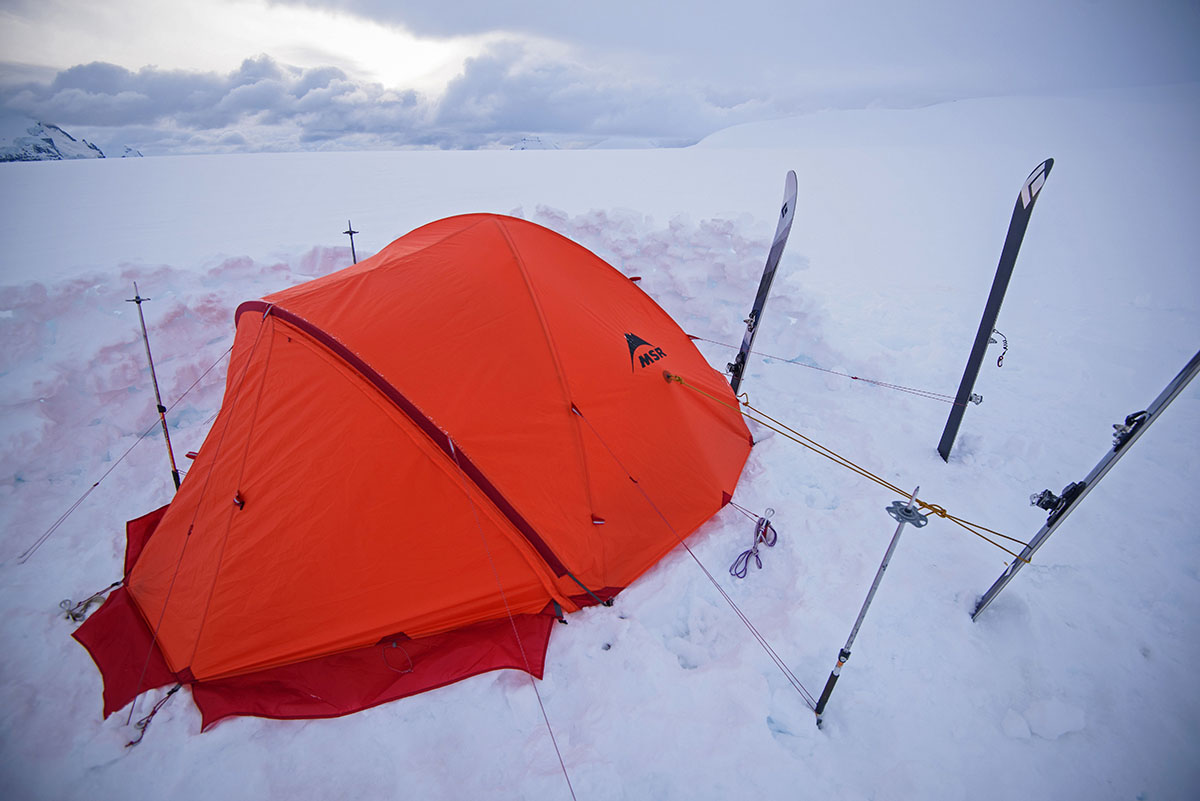
Wind
The Remote 2 is designed to withstand high winds and it certainly hasn’t disappointed thus far. At Camp Sherman on Mount Rainier, we pitched the Remote 2 beside Mountain Hardwear's bombproof Trango 2 and ultralight Direkt 2, and braved the elements in similar fashion. However, the Black Diamond Mega Light shelter, also in camp, flapped and bent like a sail in the wind that night.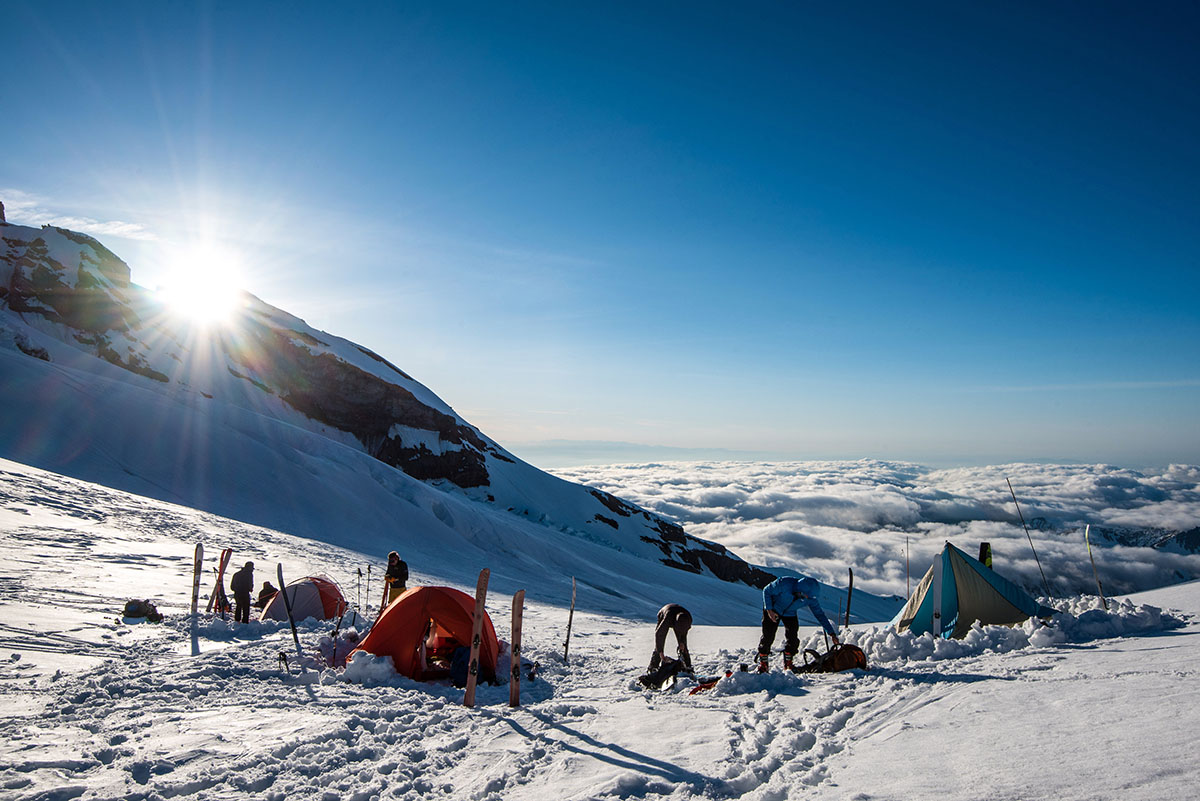
The three-pole construction on the Remote 2 means that it has the time-tested stability of a dome tent, with even more strength (and height) thanks to the addition of the door-to-door pole. Further, the Easton Syclone poles that come with MSR’s all-season tents, described by MSR as “nearly indestructible,” are designed to flex, rather than break or deform, under high loads. Similar to our experience with the MSR Access 3, the new Easton poles appear well made and capable of handling very strong gusts. Complementing the sturdy pole structure are a total of 14 possible guy-out points to root the tent securely in every direction. One downside, however, is the lack of multi-point guylines such as those on The North Face Mountain 25, which can help reduce the number of anchoring pegs required. This is helpful when using a limited number of poles and skis to anchor a tent in the snow.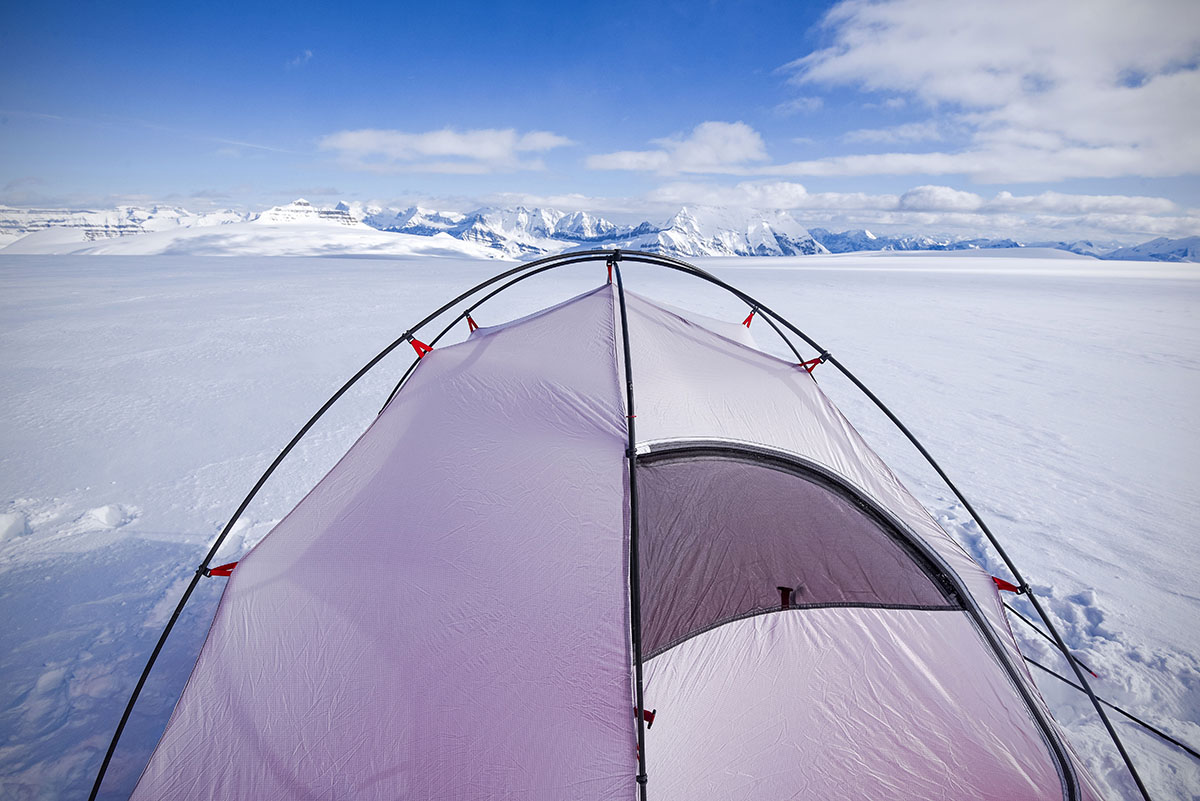
Snow
The Remote is built to weather snow from above and below, and with steep walls for sluffing flakes and snow flaps on the vestibules designed to seal out spindrift, it has most of the features I want in a winter tent. That said, there are no snow flaps on the sides of the tent, where our heads and feet rest inside. To make matters worse, when pitched taut the bottom edge of the rainfly can float up to five inches above the ground. While this might help with air flow, it also allows more cold air and wind-driven snow to pile up at the head and foot of the tent. I wish that MSR had extended the fly lower here, or included snow flaps around the entire perimeter for a truly bombproof design.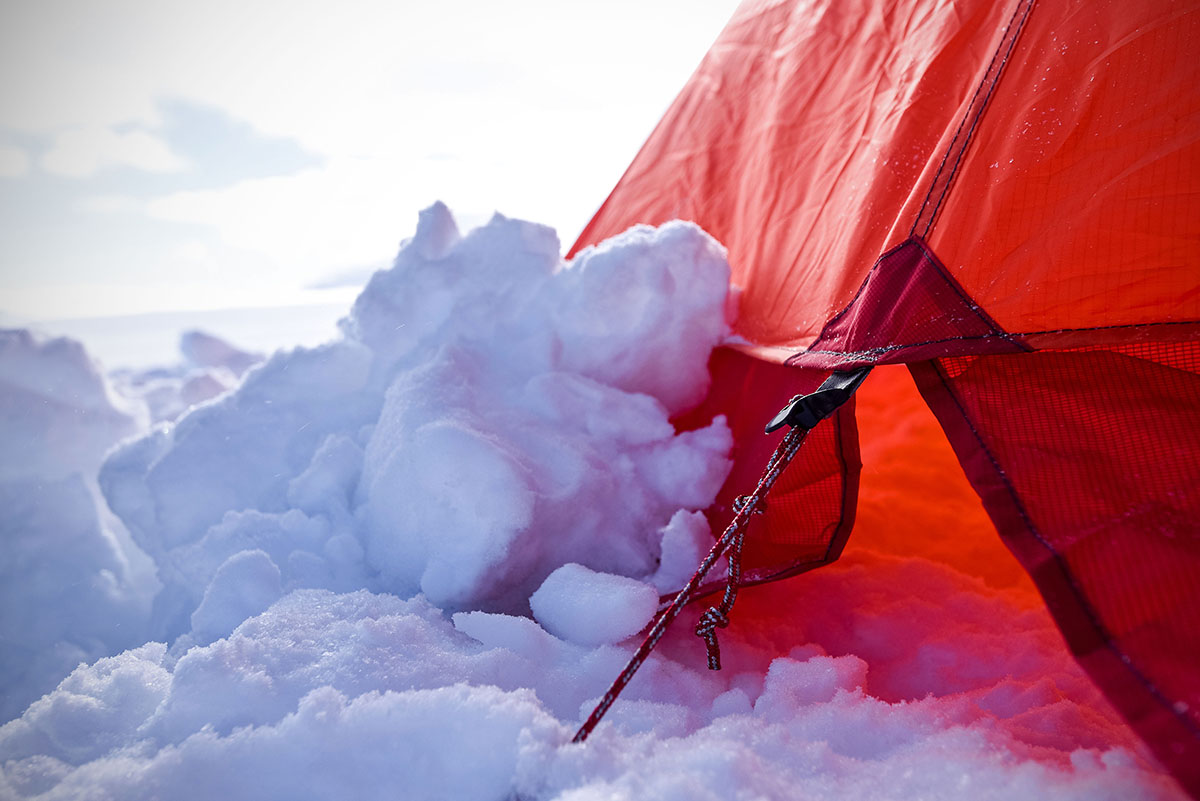
Rain
Not all 4-season tents are made to hold up in wet conditions, especially some single-wall designs that are prone to leaking in prolonged rain. The double-wall MSR Remote 2, however, is fully impermeable to rain—we experienced precipitation even on the glacier in the Canadian Rockies and were well protected. The tent comes with a beefy 68D ripstop polyester rainfly with a 1,800mm polyurethane and DWR coating, offering more reliable, durable protection than The North Face’s Mountain 25 (40D and 1,500mm). The large vestibule allowed us to retreat from the rain and remove our wet layers before getting inside the tent, an essential feature that helps a great deal with overall moisture management.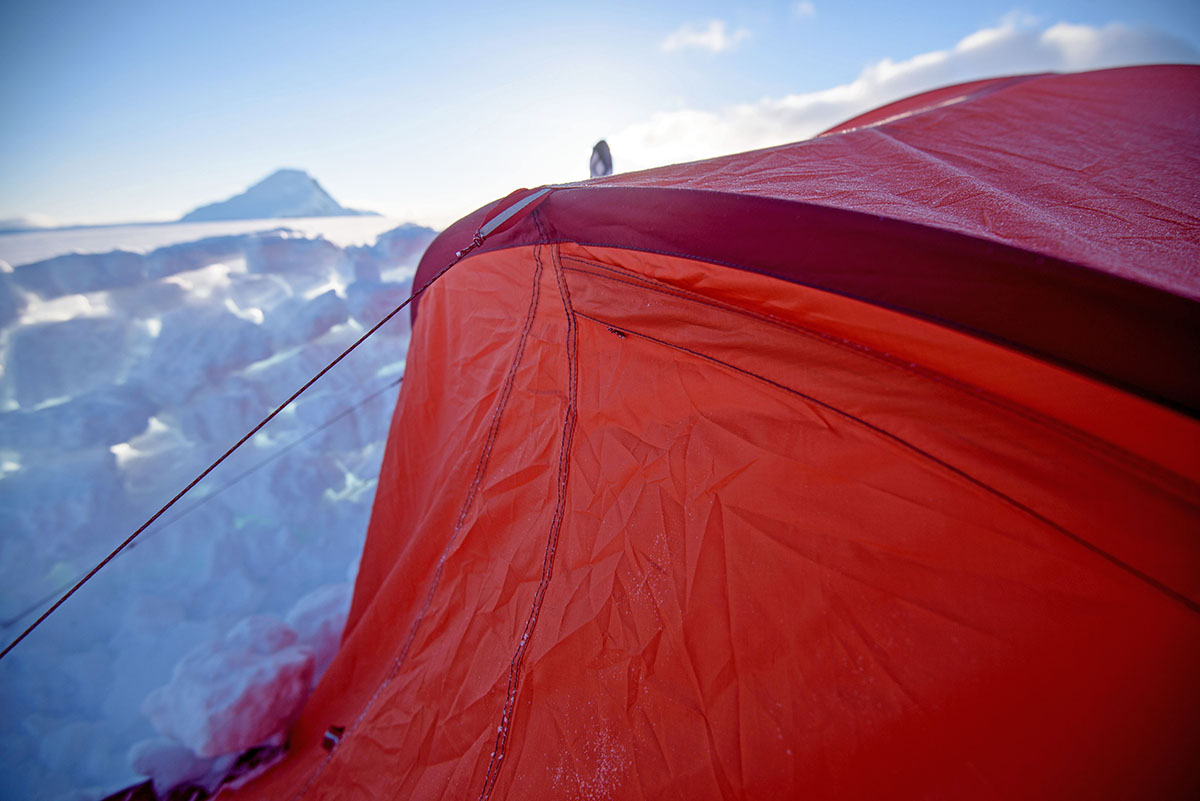
The bottom of the tent is equally reliable, thanks to the quality seam taping and DuraShield polyurethane coating. We did have some issues with moisture forming along the bathtub floor during the night (covered in the ventilation section below), but this isn't a knock against the waterproofing. All told, the Remote offers impressive rain protection, which makes it a viable option for trips with long approaches and subalpine weather conditions.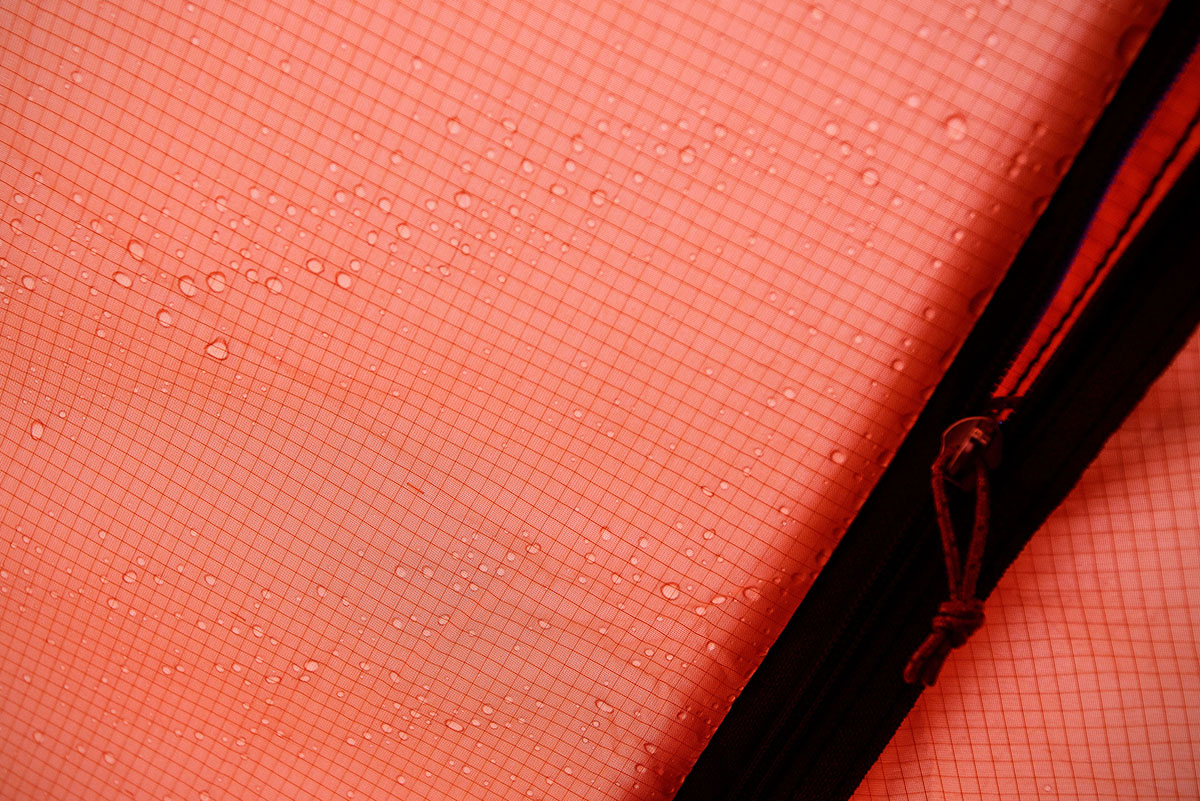
Condensation can be a big issue when winter camping; tents walk a fine line between trapping warmth without trapping too much air. The Remote definitely is a warm tent due to the thick rainfly material, which comes with pros and cons. In the mornings, the strong spring sun warmed the tent quickly, bringing the inside up to a sauna-like 85°F and moisture collected along the walls. On the flipside, during our coldest night when temperatures dropped to 5°F, we zipped the mesh ventilation panels at the top of each door closed and awoke in the morning to frost lining the inside ceiling. On future nights, we opened both the mesh panels and unzipped the doors at the top and had no issues with condensation—likely aided by the windy conditions. Despite the positive results, it’s my opinion that dome tents like the MSR Remote 2 would benefit from ceiling ventilation options and a more breathable canopy material such as those found in the Hilleberg Jannu or The North Face Mountain 25.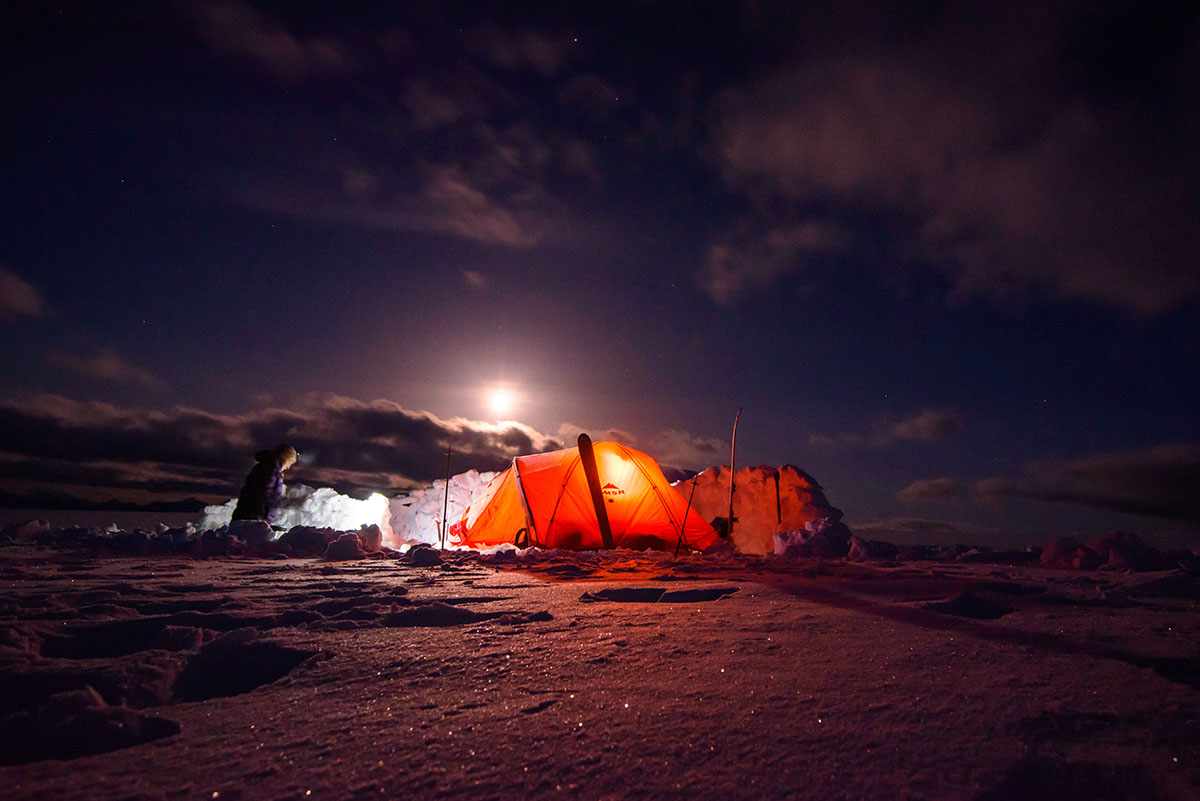
The Remote 2 is designed for use on expeditions in which teams might weather out multiple days inside. Therefore, it has a spacious floor plan with 33 square feet of interior floor space and a peak height of 44 inches, which owing to the three-pole construction, extends for a great portion of the interior. This is plenty of room for two full-length sleeping pads, two full sized men, and all of our bulky winter gear spread around the inside. Two large pockets next to each door allow for additional organization, with tabs at the top to hang gear. The relatively high ceiling also means you can comfortably sit upright in the tent without worrying about touching the sides.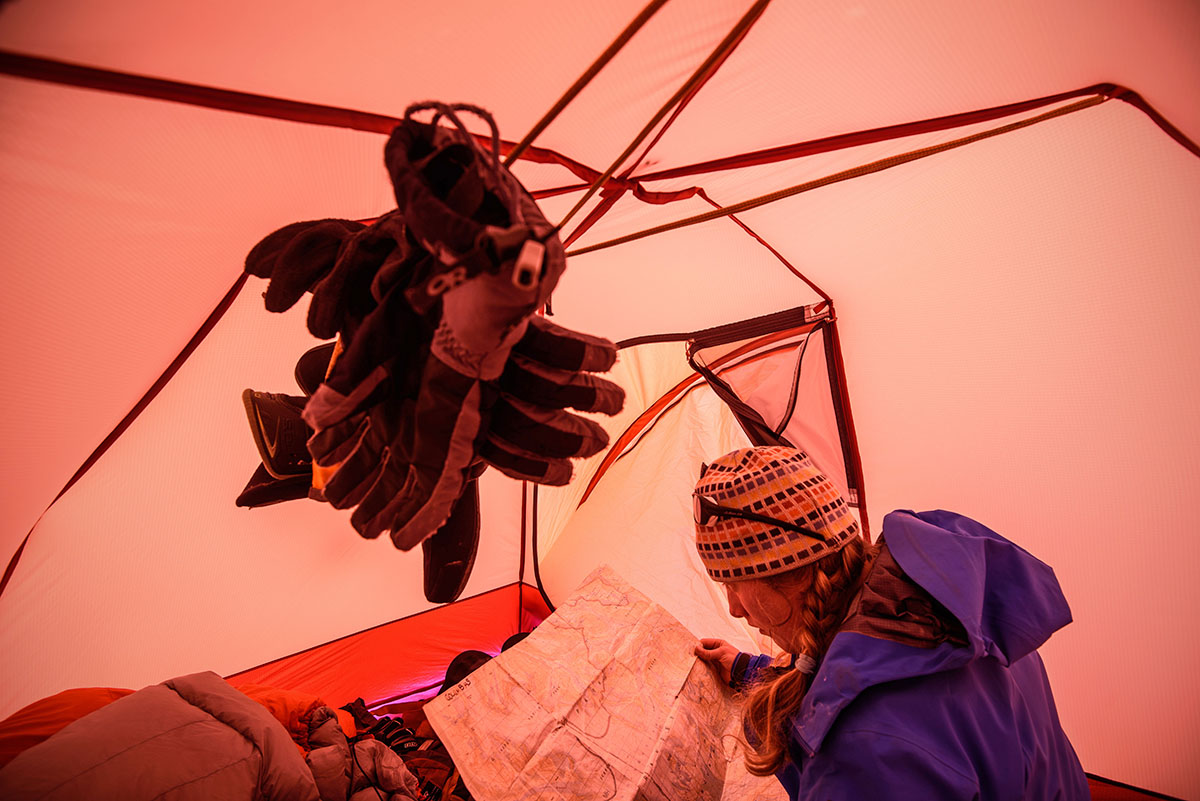
Vestibule space is equally impressive with a floor area of 22 square feet, which is twice that of other 4-season tents like The North Face Mountain 25. In poor winter weather, I appreciate having a large vestibule to protect all my gear without having it inside the tent. With the MSR Remote, I enjoyed being able to dig a snow pit inside the primary vestibule (16.5 square feet) to create a large area to take off ski boots, change out of wet clothing, and store two expedition-sized backpacks. Additionally, the primary vestibule is big enough that I felt comfortable using a stove on cold mornings when I didn't want to be too far from my sleeping bag. The secondary vestibule (5.5 square feet) also contains a large door and enough space to fit items like boots, helmets, and crampons.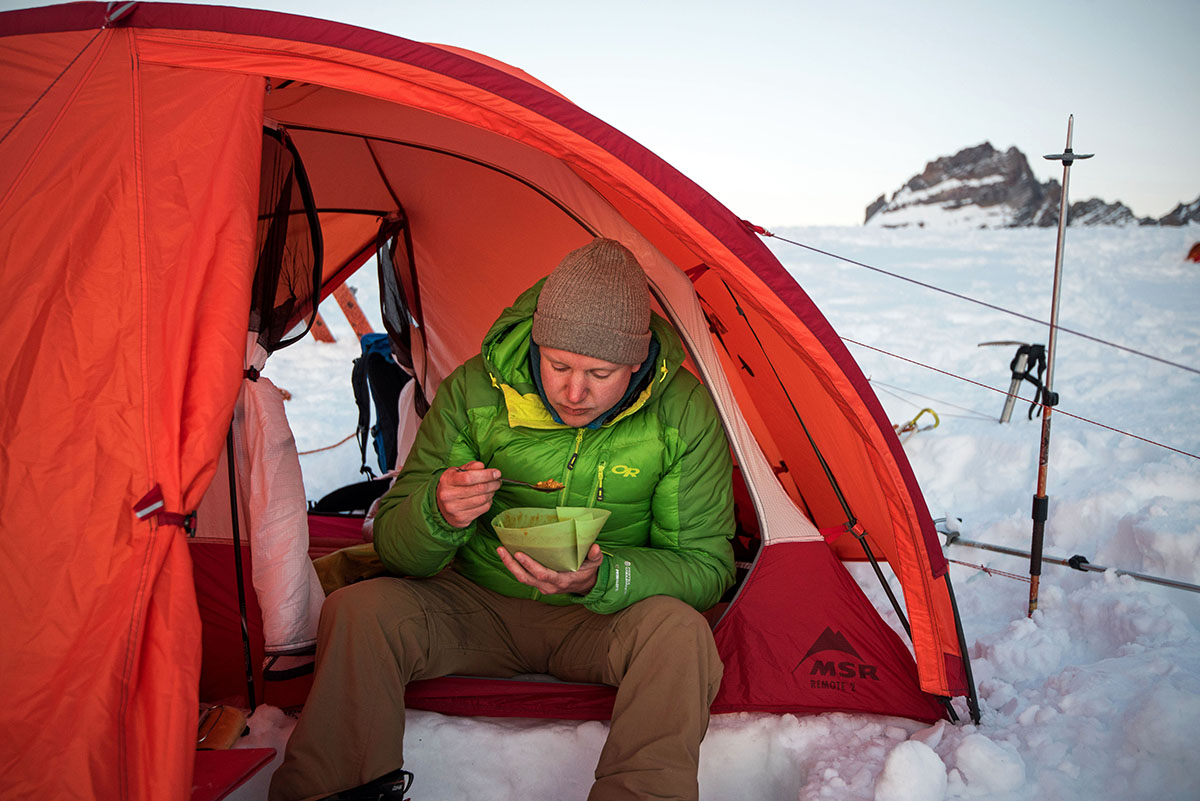
The minimum weight of the MSR Remote 2 is 6 pounds 8 ounces, placing it roughly in the middle of the field for double-wall, 4-season tents. Throw in the eight MSR Blizzard snow stakes that I used for these trips, and my fully packed weight totaled a very competitive 6 pounds 14 ounces. You could save multiple pounds with a single-wall, 4-season tent like the Black Diamond Eldorado, but will compromise comfort in colder temperatures and rain, interior and vestibule space, and will likely be confined to one door. Comparing the Remote 2 to other double-wall tents, such as The North Face Mountain 25 (8 pounds 13 ounces), gives a good reference point: it manages to fit a great deal of comfort and protection into a relatively light package.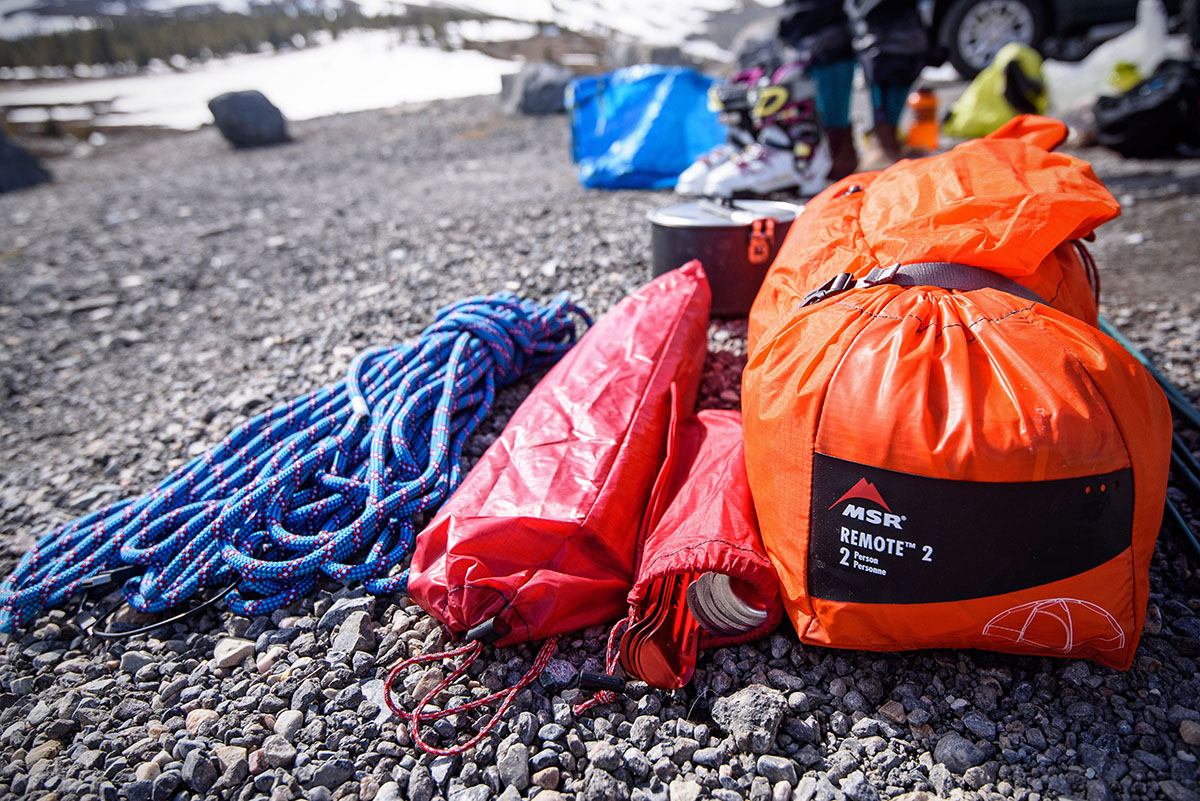
Learning to set up the Remote 2 took me a few attempts to master, especially in the windy conditions we experienced. The body of the tent goes up easily enough by securing the four corners and matching the color coordinated pole clips to the three main poles (a fourth pole is used to create the large vestibule). It’s when you get to the fly and vestibules that it becomes a two-person job in the wind—they do not stay in position without tension from guylines. All told, eight anchor points are required for a bare minimum setup, but I recommend being prepared to use more.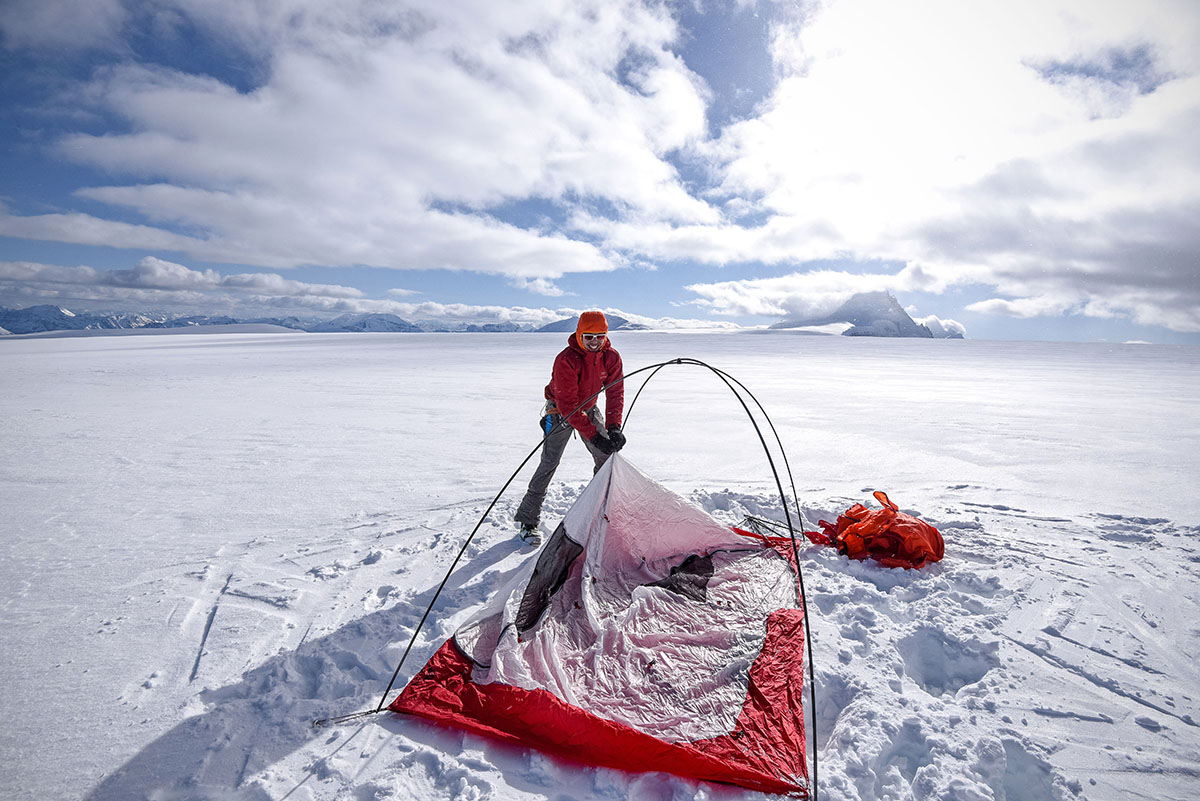
One letdown of the design was the Velcro straps that connect the guyline attachment points to the poles. In theory, having a direct connection to the tent pole is a great idea for increasing strength, but I found these to be a bit flimsy as the Velcro straps were cut too long to fully cinch when wrapped around the pole. Given this construction, I had difficulty aligning the seams of the rainfly with the poles—there was a tendency for the fly to sit off kilter. I did eventually find that setting the tension with the three guylines on the vestibule and then tightening the rest of the guylines helped with this process. On the bright side, even with gloves on I found the 17 plastic clips that attach the poles to the tent easy to handle, in addition to the camming plates on the guylines
It’s also important to note that the MSR Remote 2 comes with nine MSR Ground Hog stakes, which are only suitable for soft soil. If you wish to take this tent into the snow, consider purchasing the MSR Blizzard stakes and extra guyline to secure the tent using skis and poles.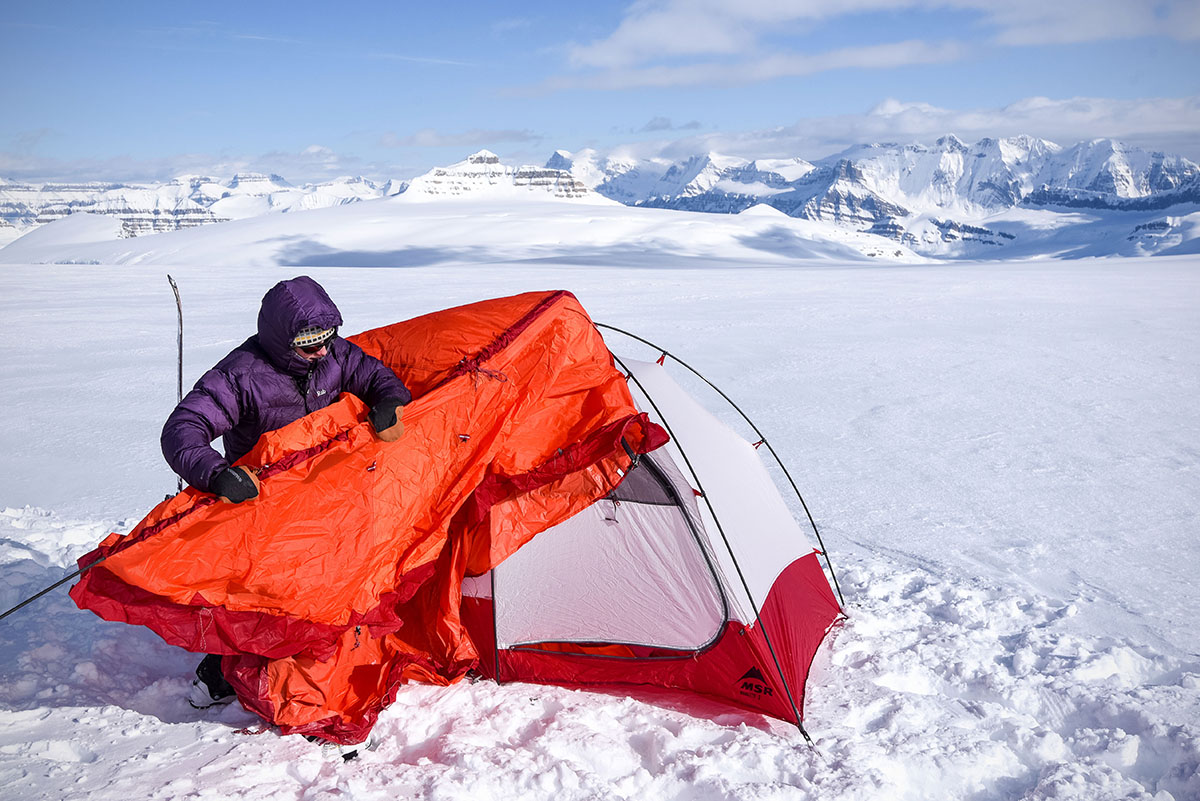
I've taken the MSR Remote 2 for five days on the Columbia Icefield, two days on Mount Rainier, and another five days on a summer camping trip with no signs of wear yet on the tent. I'll be keeping an eye on how the DWR coating, along with the polyurethane coating, holds on the rainfly. Unlike the more expensive sil-nylon coating used on Hilleberg tents, the polyurethane coating is less resilient to prolonged exposure to moisture. Because of this, it is of utmost importance to dry the tent completely before packing it away for long stretches.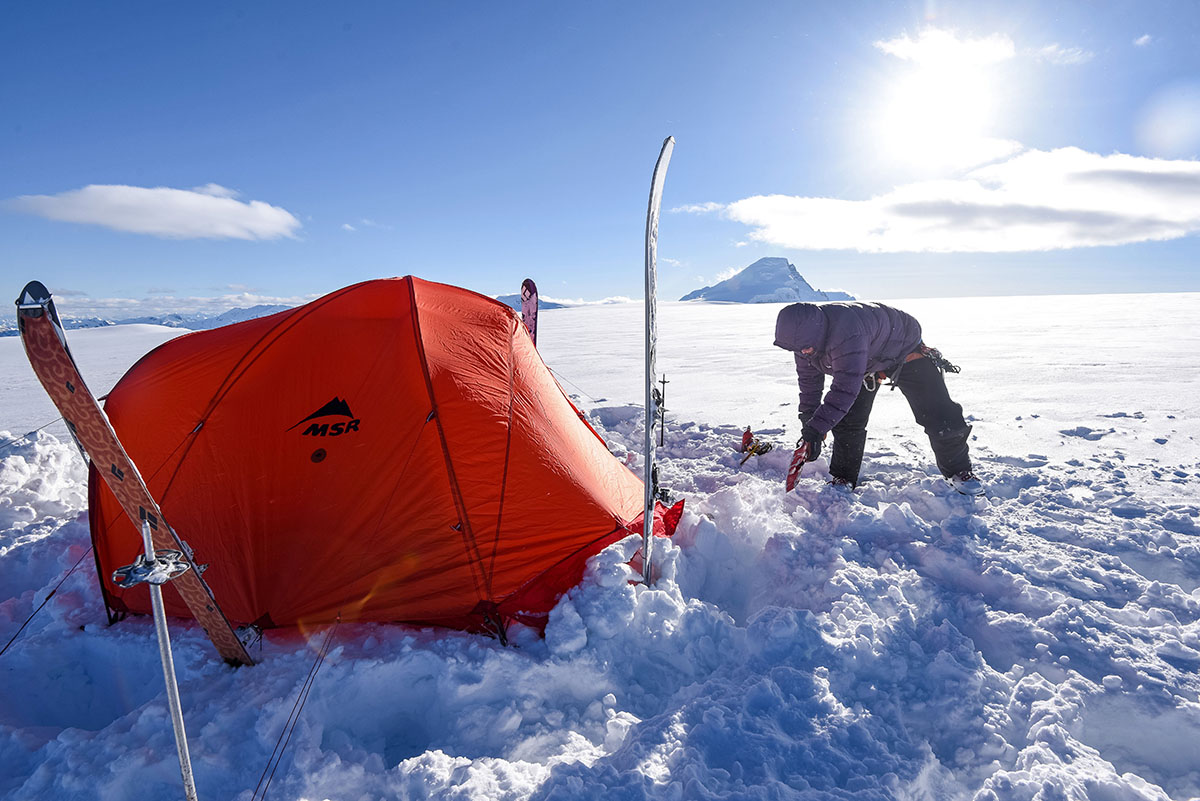
For this review, we tested the MSR Remote 2, a two-person tent that weighs 6 pounds 8 ounces and features 33 square feet of interior space. MSR also makes the Remote in a 3-person model, which features a 4-pole design and adds 13 square feet of interior space. Both tents are made with the same materials and boast similar weather protection and durability. Further, they share a similar overall design, with two doors and two vestibules (both offering a total of 22 square feet of space) and the same 44-inch peak height. The Remote 3 clocks in at 7 pounds 14 ounces and is priced at $900. For two winter campers with a lot of gear to store inside the tent, the 3-person version makes a lot of sense.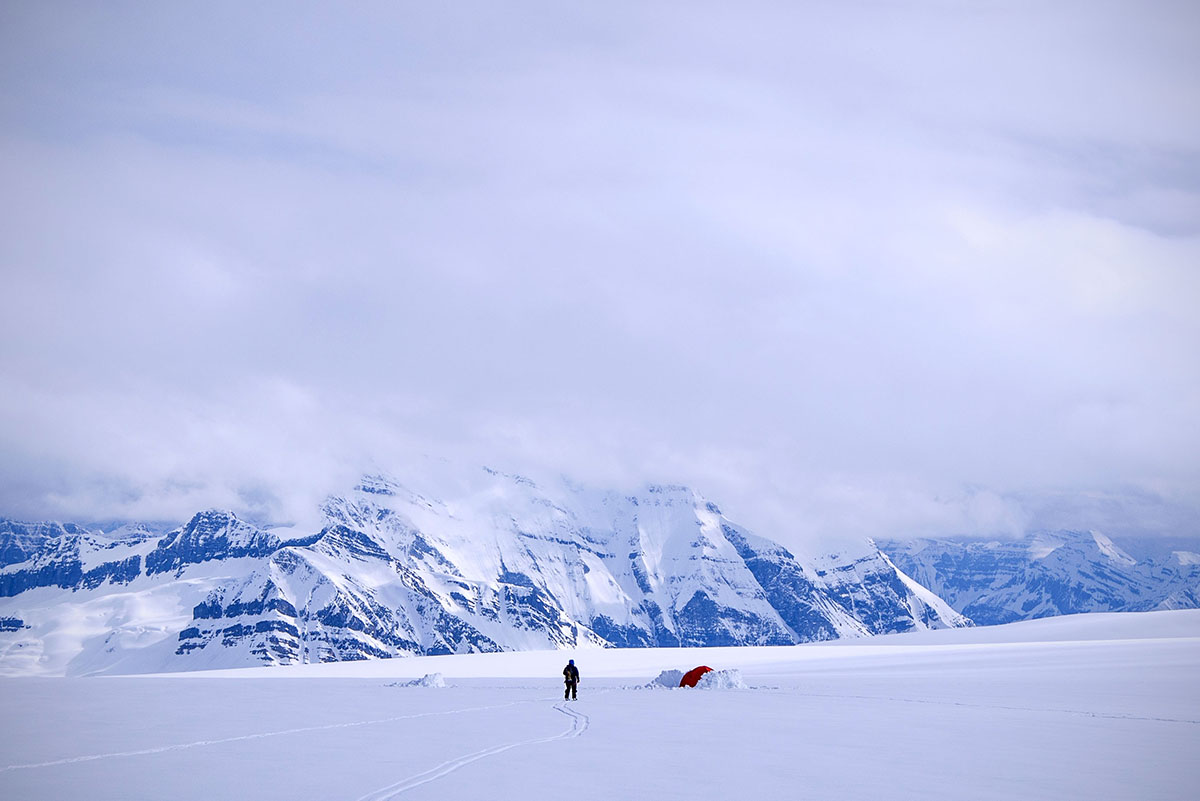
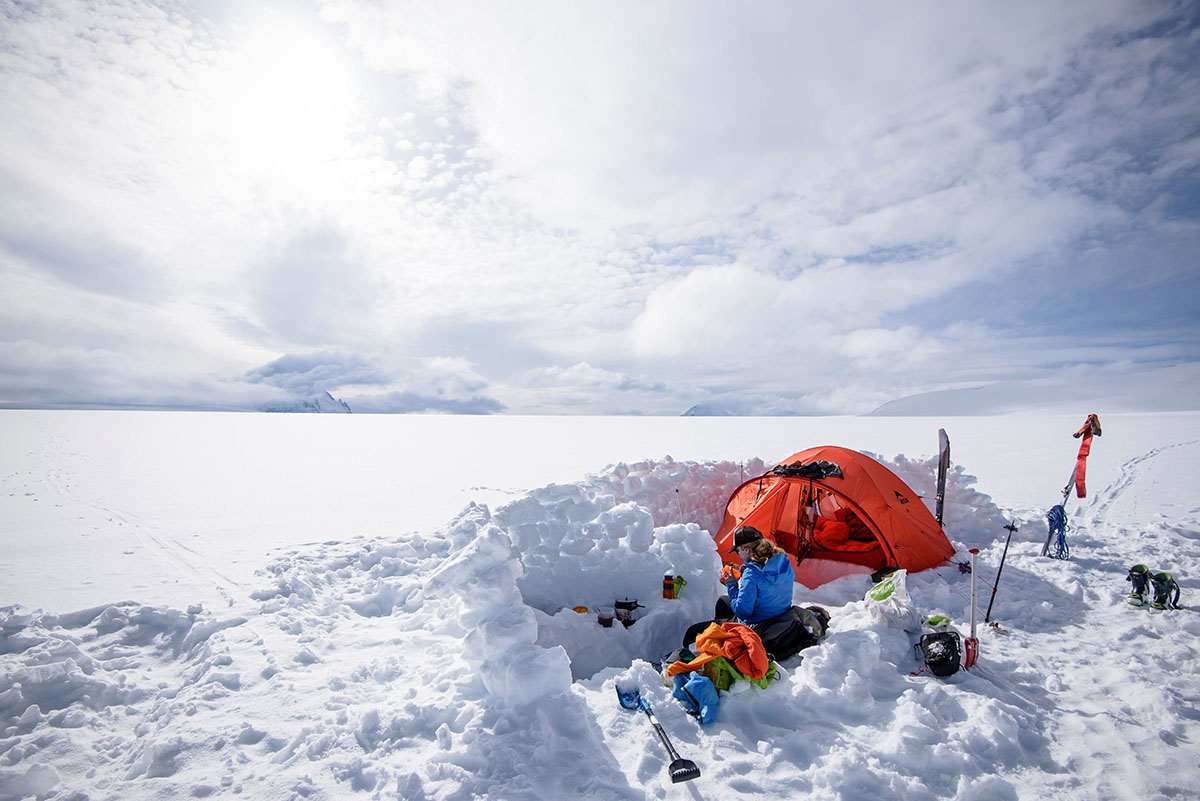
| Tent | Price | Category | Weight | Area | Height | Wall(s) |
|---|---|---|---|---|---|---|
| MSR Remote 2 | $860 | Basecamp/mountaineering | 6 lbs. 8 oz. | 33 sq. ft. | 43 in. | Double |
| Hilleberg Jannu | $990 | Mountaineering | 6 lbs. 2 oz. | 34.4 sq. ft. | 39 in. | Double |
| The North Face Mountain 25 | $689 | Basecamp | 8 lbs. 13 oz. | 32.3 sq. ft. | 41 in. | Double |
| MSR Access 2 | $600 | Treeline | 3 lbs. 10 oz. | 29 sq. ft. | 42 in. | Double |
| Nemo Choguri 2 | $700 | Basecamp | 6 lbs. 13 oz. | 36.3 sq. ft. | 39 in. | Double |
Picking the right 4-season tent is all about compromising between functionality, weight, and price. The MSR Remote 2 balances its priorities better than most tents, but is not without stiff competition. First, Hilleberg’s Jannu sets the standard for the ideal durable and lightweight two-person double-wall tent. Its minimum weight is 6 pounds 2 ounces, which rings in 6 ounces lighter than the Remote 2. Further, the Jannu is made with a more durable silicone-coated fly rather than a polyurethane/DWR coating. Hilleberg tents are regarded as top-of-the-line, and the price comes with it too: $990 for the Jannu compared to $800 for the Remote 2. If you're looking for the strongest tent and willing to pay the price while sacrificing some room—the Jannu is roughly the same size but with less head room and only a single 12.9-square-foot vestibule—the Hilleberg Jannu is likely your tent of choice.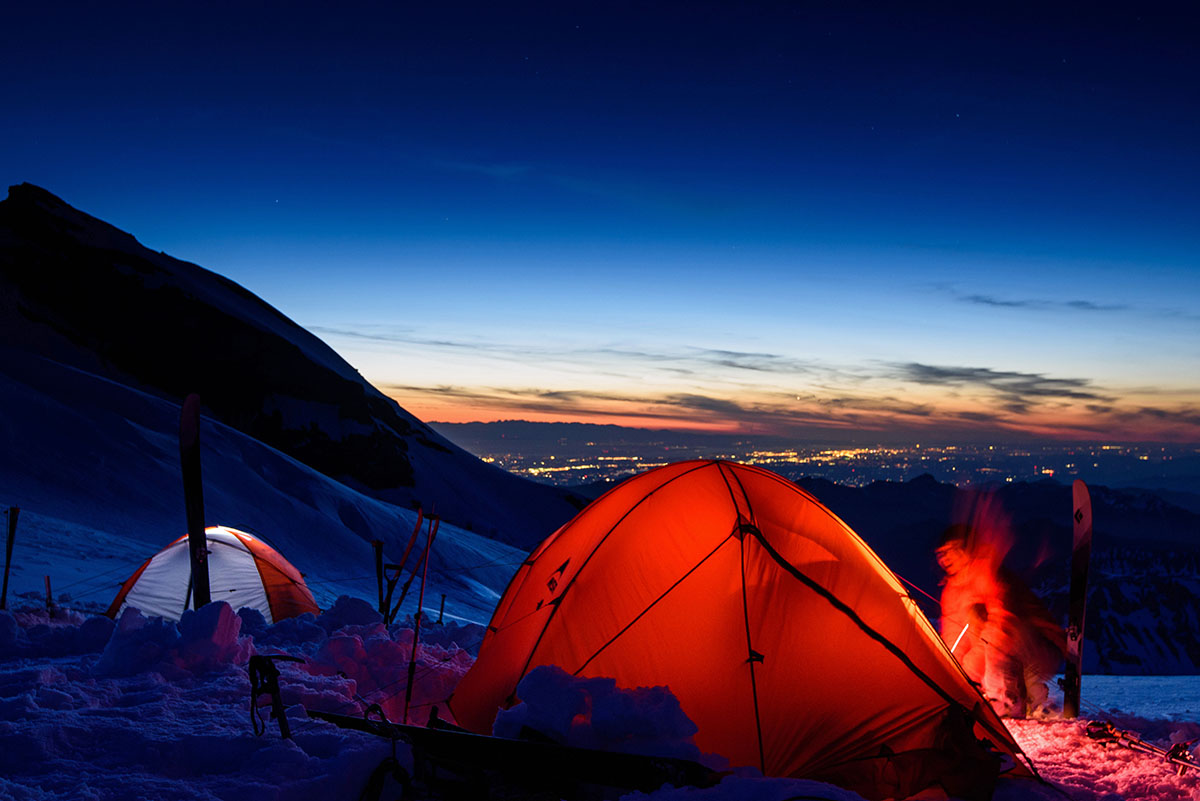
For more strength but also more weight, the bombproof The North Face Mountain 25 is worth considering. Both tents have similar floor area at 32.3 square feet for the TNF and 33 square feet for the MSR. The Remote 2 has the taller peak height (44 vs 41 inches), by far the larger vestibule space (22 vs 11 square feet), and weighs a full 2 pounds less. However, the Mountain 25’s extra weight has its benefits: the tent sports a beefier overlapping pole structure, tougher floor, and more ventilation options for an overall sturdier and more comfortable design. Tack on the more affordable $689 price, and the Mountain 25 is tough to beat for your basecamping needs.
If you're not planning to camp in severe mountain conditions, the MSR Access is a less burly 4-season tent. A tradeoff in strength and durability, the Access 2 comes in at a minimum weight of only 3 pounds 10 ounces, but features 4 square feet less interior space and a significantly thinner 20D fly. We’ve been impressed with the weight and performance of the Access—it’s accompanied us on ski tours throughout British Columbia and withstood high winds during extended treks in the mountains of Peru—but it’s in a different class in terms of weather protection than the Remote. If you’ll be high in the alpine, need strong snow load performance, or a bombproof tent that you can trust, the Remote gets the nod from us.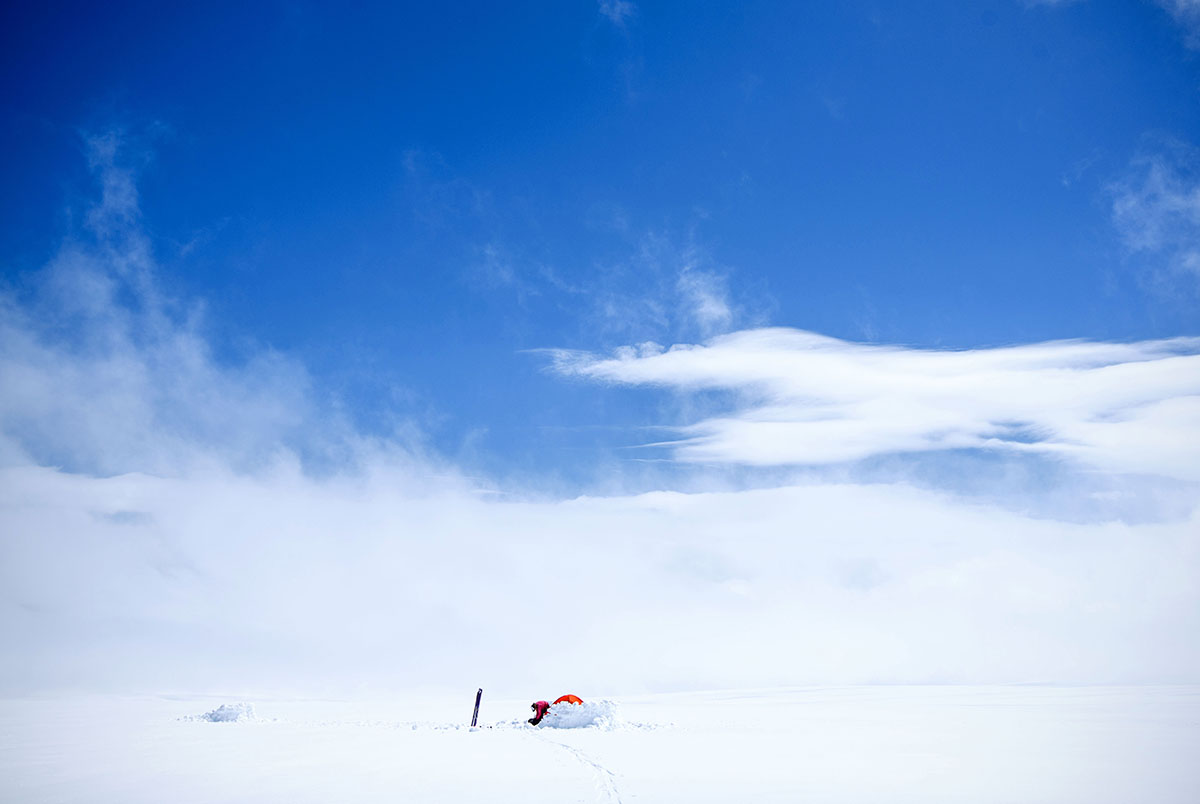
Lastly, if you’re in the market for a sturdy, spacious basecamp tent, the Nemo Chogori 2 is worth a look. At 6 pounds 13 ounces, it’s comparable with the Remote in terms of weight, and tacks on an additional 3.3 square feet of floor space (although you lose 4 inches overhead with a shorter 39-inch peak height). But where the two differ most is in design: We favor the Chogori for use in inclement weather—its external pole structure makes for quick setup, and the 5-pole design holds up to heavy winds better than the MSR’s 3-pole structure. However, the Nemo makes a few compromises, with 6 square feet less vestibule space and a significantly less durable fly (30D vs. the MSR’s 68D). The Mountain 25 above is superior to both tents for truly terrible weather, but for weight-conscious missions, we’d opt for the MSR Remote over the Chogori.